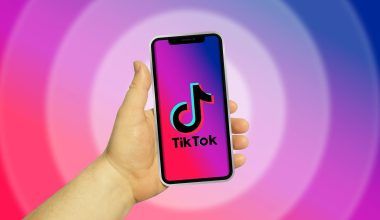The Iconic Black-and-White Sticker Everyone Recognizes
We’ve all seen it. The bold, black-and-white “Parental Advisory Explicit Lyrics” logo on album covers, streaming platforms, and merchandise. It’s instantly recognizable, a symbol of rebellion for some and a warning label for others. But how did this logo come to be, and why is it so significant in music history?
In this blog, we’ll explore the story behind the Parental Advisory Explicit Lyrics logo, from its origins to its cultural impact. Whether you’re a fan of rap, rock, or pop, you’ve likely encountered this logo countless times. Let’s dive into its journey and why it matters so much in the music world.
What Is the Parental Advisory Explicit Lyrics Logo?
The Parental Advisory Explicit Lyrics logo, often simply called the “Parental Advisory logo,” is more than just a sticker. It’s a label that warns parents about potentially offensive content in music. It was created to ensure that explicit lyrics—those containing strong language, drug references, violence, or sexual themes—wouldn’t catch listeners off guard, especially younger audiences.
When you see this logo, it signals that the album or song contains material that may not be suitable for children. Over time, it has become a symbol of freedom of expression and, paradoxically, a marketing tool for artists wanting to appeal to a rebellious audience.
How the Parental Advisory Logo Came to Be
The story of the Parental Advisory Explicit Lyrics logo begins in the 1980s. At the time, music was rapidly evolving, and lyrics were becoming bolder and more explicit. Parents and advocacy groups started raising concerns about the kind of messages children were exposed to.
The Role of the PMRC
The Parents Music Resource Center (PMRC) was a significant player in the creation of the logo. Founded in 1985 by a group of influential women, including Tipper Gore, the PMRC aimed to give parents tools to monitor their children’s music consumption. They were concerned about the rising explicitness in songs, especially in genres like heavy metal and hip-hop.
After much debate and public hearings, the Recording Industry Association of America (RIAA) agreed to include a warning label on albums with explicit content. The first version of the Parental Advisory logo appeared in 1985, but it looked very different from the sleek design we know today.
The Evolution of the Logo
The Parental Advisory logo went through several iterations before settling on the bold, minimalist design we see today. Early versions were less standardized, and record labels had more freedom to design their own warnings. This inconsistency led to confusion, prompting the need for a unified design.
By the 1990s, the current logo was introduced. Its clean, bold text against a black-and-white background ensured it was easily visible on album covers. This version became the industry standard, appearing on physical albums, CDs, and even digital platforms.
Why the Parental Advisory Logo Became Iconic
The Parental Advisory Explicit Lyrics logo is more than just a warning—it’s a cultural icon. Its stark design and widespread use have made it instantly recognizable. For many artists, having this logo on their album became a badge of honor, symbolizing their willingness to push boundaries and challenge norms.
A Marketing Tool for Artists
Interestingly, the logo sometimes had the opposite effect of what it was intended for. Instead of deterring listeners, it attracted them. Teens and young adults often saw the sticker as a sign that the music was edgy, cool, or rebellious. This unintended consequence turned the warning into a powerful marketing tool.
The Logo in the Digital Age
With the rise of streaming platforms like Spotify, Apple Music, and YouTube, the way we consume music has changed. However, the Parental Advisory logo has adapted seamlessly to the digital era. Explicit tracks are now marked with the same iconic logo or the word “Explicit” next to the title.
Why It Still Matters
Even in the digital age, where users have more control over what they listen to, the Parental Advisory logo serves an essential purpose.
Cultural Impact of the Parental Advisory Logo
The logo has left a lasting mark on popular culture. Beyond its role in music, it has been used in fashion, art, and even memes. The logo’s straightforward design and bold message have made it a symbol of free expression and artistic rebellion.
A Symbol of Censorship or Freedom?
The Parental Advisory logo has sparked debates about censorship versus creative freedom. While some view it as a necessary tool for protecting young audiences, others see it as an unnecessary limitation on artistic expression. This tension has only added to its cultural significance.
Fun Facts About the Parental Advisory Logo
- The First Album with the Logo: The first album to feature the warning label was Frank Zappa’s Jazz From Hell in 1986. Ironically, the album was instrumental and had no lyrics!
- Parody and Pop Culture: The logo has been parodied in countless ways, appearing on T-shirts, phone cases, and even coffee mugs.
Conclusion: More Than Just a Logo
The Parental Advisory Explicit Lyrics logo is a fascinating example of how a simple design can have a massive impact. It started as a tool for parental guidance but grew into a cultural icon, representing both caution and creativity.
Whether you see it as a warning or a badge of honor, there’s no denying its significance. The next time you spot the logo, take a moment to appreciate its journey—from a small sticker to a global symbol of music’s power to inspire, provoke, and unite.
For further reading, explore these related articles:
- What is Vevo Music and Why It’s Important for Artists and Fans?
- Creative Artist Profile Picture Ideas for Musicians
For additional resources on music marketing and distribution, visit DMT Records Pvt. Ltd..






